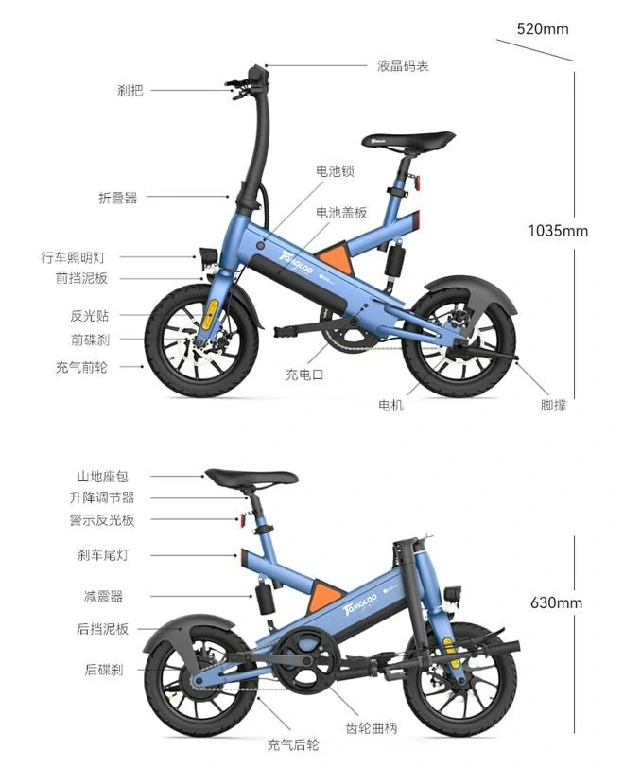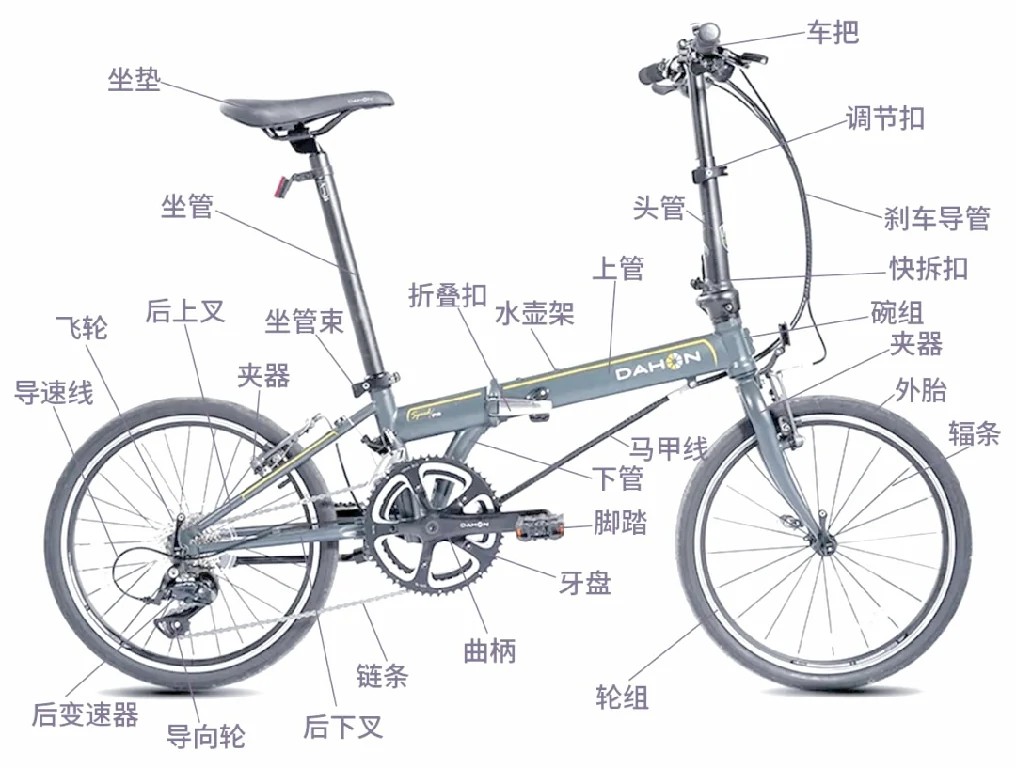Detailed explanation of the structure and component names of electric bicycles
2025-04-22
An electric bicycle consists of two main parts: the body structure and the electrical control system, which work together to achieve riding, driving, braking, and safety functions. The following is a detailed analysis of its core structure and components:
1、 Vehicle structure (mechanical part)
The vehicle body is the supporting foundation of the entire vehicle, consisting of the following components:
frame
Function: The vehicle frame is used to carry the dynamic loads of riders, cargo, and vehicles.
Material: Steel pipe, aluminum alloy or carbon fiber composite material, balancing strength and lightweight.
Front fork component
Composition: Front fork riser, front fork legs.
Function: Connect the handlebars, frame, and front wheels to achieve steering and maintain balance; Modern electric bicycles often use shock-absorbing front forks to enhance comfort.
Wheeling System
Front/rear wheels: composed of wheel rims, tires, spokes, and bulges (axle skins).
Tires: divided into inner and outer tubes, the material affects grip and wear resistance (such as butyl rubber inner tubes with good sealing).
Spokes: Weave and connect the flower drum with the wheel rim to transmit loads.
drive system
Pedals/cranks/axles: manually driven components that convert pedaling force into rotational force.
Chain/flywheel: transmits power to the rear wheels, and the flywheel is a one-way ratchet structure.
Chain cover: protects the chain, prevents dust, and avoids entanglement of the pant legs.
brake system
Car brakes: divided into wheel brakes (commonly used for front brakes) and axle brakes (such as expansion brakes and holding brakes), braking through friction.
Brake lever: installed on the handlebar to control the braking action.
Bearing and accessory components
Saddle/saddle tube: supports the rider, and the saddle tube can be adjusted in height.
Hanger/bracket: load and parking support.
Mud board/reflector: prevents splashing of mud and water, and the reflector enhances nighttime safety.
Car lock/basket: anti-theft and storage functions.
2、 Electrical Control System (Power and Intelligent Core)
The electrical system realizes power drive and intelligent control, and the main components include:
Battery (battery)
Types: Lead acid batteries (low-cost), lithium-ion batteries (lightweight and high-energy).
Function: Store electrical energy and provide power for the motor.
electrical machinery
Type:
Brushed motor: simple structure, but requires regular maintenance of the electric brush.
Brushless motor: efficient and low-noise, maintenance free, mainstream choice.
Installation method: wheel hub type (direct drive rear wheels) or center mounted type (through chain drive).
Function: Convert electrical energy into mechanical energy to drive the wheels to rotate.
controller
Function: Electrical system "brain", controls motor speed and current output, with:
Protection functions: undervoltage, overcurrent, speed limit, brake power-off.
Intelligent functions: self check for faults, adjust riding modes (such as economy/power mode).
charger
Function: Convert AC power to DC power to charge the battery.
Features: Intelligent pulse charging, extending battery life, matching with battery model.
Instruments and sensors
Instrument panel: displays vehicle speed, battery level, lighting status, etc.
Assist sensor: detects pedal torque or speed, achieving coordinated driving between human and electric power.
Rotary handle: By sensing the rotation of the hand through Hall elements, the motor power output is controlled.
light system
Headlights/Taillights: Provides night lighting, with some models equipped with turn signals.
Brake lights: automatically turn on when braking, warning the vehicles behind.
3、 Structural layout and working principle
Power transmission path: battery → controller → motor → rear wheel (or transmitted to the rear wheel through a chain).
Human computer interaction: The handlebars integrate handlebars, brake levers, and gauges, allowing riders to control acceleration, braking, and monitor status through manual operation.
Safety design: reflectors, brake power-off function, undervoltage protection, etc. ensure safe riding.
Structural diagram of electric bicycle

Bicycle Structure Diagram

OEM customization of electric bicycle battery pack
